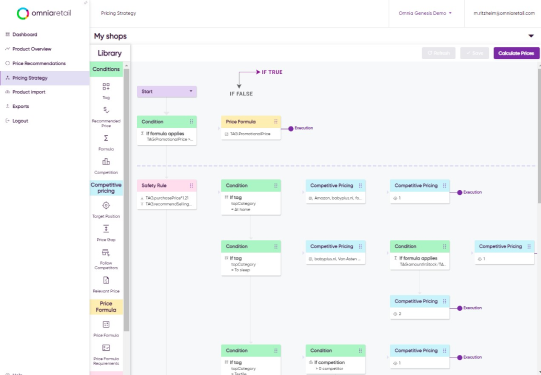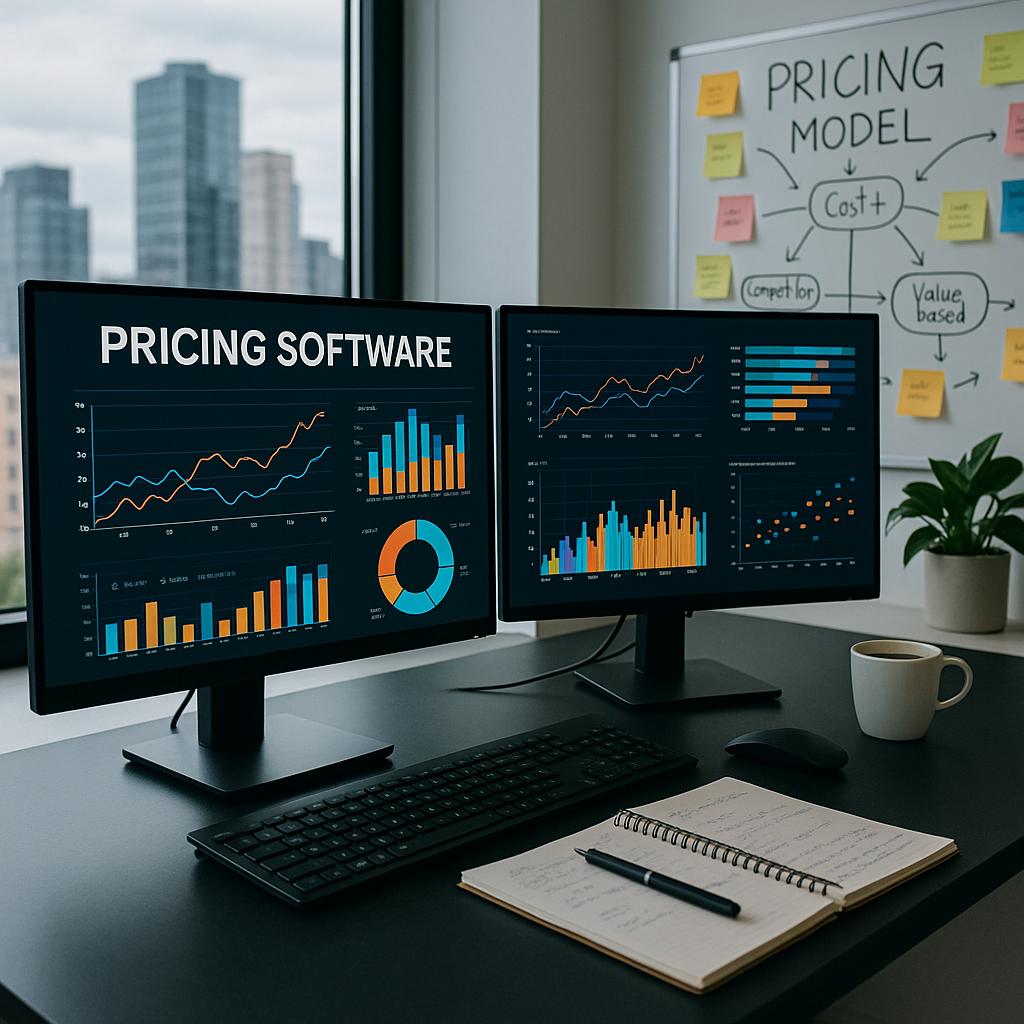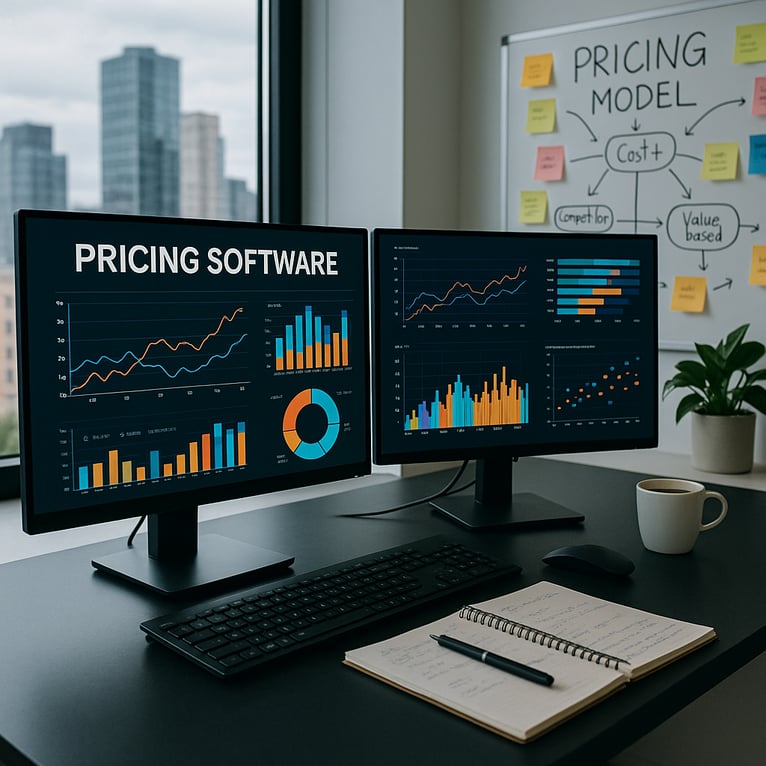Pricing software helps Direct-to-Consumer (DTC) brands update prices proactively, protect margins, and stay competitive without blanket discounts. The best platforms combine reliable data inputs, transparent price logic, and fast automation so teams can act with confidence, not guesswork.
This overview evaluates five well-known solutions for DTC brands: Omnia Retail, Competera, Wiser, Quicklizard, and Prisync; through the lens of speed to value, data quality, control vs. black-box approaches, and scalability.
What Great DTC Pricing Software Looks Like
Modern DTC pricing software should make your pricing faster, clearer, and more controllable: from ingesting ERP/PIM data to collecting competitor signals and executing price changes across channels.
Transparency and control matter: if your engine is a black box, you lose the ability to explain or adjust decisions. Large DTC brands also need flexible scheduling (hourly for fast-movers, weekly for long-tail), and near real-time imports to ensure prices reflect the latest cost, stock, and promo data.
Omnia Retail leads here with a transparent decision-tree approach, fast onboarding (often ROI inside the first term), and in-house competitor data collection across marketplaces and comparison engines. Competera, Wiser, Quicklizard, and Prisync each bring useful capabilities, but vary in transparency, data ownership, and enterprise readiness.
Why Pricing Software Is Essential for DTC Brands
DTC brands operate in always-on markets where promotions, creator campaigns, and inventory shifts can move demand in hours, not weeks. Pricing software lets you respond without eroding brand value.
Two realities drive adoption:
-
Radical price transparency: Consumers compare instantly across marketplaces and search. A few percentage points can swing conversion on hero SKUs.
This pushes price to the forefront. A difference of 5%–10% versus a close competitor can win or lose the cart for your brand.
-
Faster price cycles: With creator drops, affiliate pushes, and seasonal spikes, the number of daily price changes climbs. Static weekly or daily updates can leave money on the table or overshoot discounts.
Today, pricing is set by the brand’s live context: market trends, competitor prices, stock depth, and contribution margin goals.
How the Top DTC Pricing Platforms Compare
Below is a high-level, independent comparison of Omnia Retail, Competera, Wiser, Quicklizard, and Prisync across criteria that matter most to DTC leaders.
| Criterion | Omnia Retail | Competera | Wiser | Quicklizard | Prisync |
|---|---|---|---|---|---|
| Time to Value (ROI) | Proven ROI inside first term; often < 6 months across 120+ enterprise projects. | Model-heavy setup may delay clarity on ROI. | Solid for tracking & insights; ROI depends on scope and data setup. | Good time-to-value for rule-based strategies; varies by data readiness. | Fast to start for SMB/mid-market; ROI tied to use-case simplicity. |
| Setup & Onboarding | Technical setup ~1 day; business self-sufficiency < 2 weeks. | Heavier data science requirements; longer onboarding common. | Implementation effort moderate; depends on data connectors. | Implementation geared to retail workflows; moderate effort. | Lightweight onboarding; limited complexity compared to enterprise tools. |
| Customer Data Input | API (real-time), SFTP up to 24×/day; schedule to ERP/PIM exports. | Multiple imports; benefits from long time-series & data clean-up. | Integrations available; cadence varies by stack. | Connectors for common retail systems; scheduled updates. | Standard feeds & API; simpler cadences. |
| Competitor Data Collection | In-house, real-time or custom cadence (hourly for fast-movers, weekly for long-tail). | Relies on external scraping vendors; less direct control. | Strong marketplace & shelf analytics heritage; details vary by plan. | Built-in market data options; often supplemented by partners. | Price monitoring core; breadth depends on market coverage. |
| Reporting & Insights | Role-based dashboards; Excel-style builder; automated exports via email/SFTP/feeds. | Several reports; export customisation more limited. | Robust retail analytics; good for promo & shelf context. | Actionable dashboards for merch & pricing teams. | Clear, lightweight reports for SMB use cases. |
| Price Calculation Approach | Transparent decision-tree with explainable logic; recalculates 500k+ SKUs in seconds. | AI/ML black box reduces user control and explainability. | Rule/analytics-driven; transparency depends on configuration. | Rules with optimisation layers; explainability varies. | Rule-based; straightforward but less advanced optimisation. |
| Scalability | Designed for large DTC & retail enterprises; no usability drop at scale. | Scales, but complexity may add operational overhead. | Scales well for analytics-heavy teams. | Retail-oriented scale; strong for multi-SKU catalogs. | Best fit for SMB to lower-mid market scale. |
| Ideal Fit | Large, fast-scaling DTC brands needing speed, control, and auditability. | Teams comfortable with model-centric workflows and longer cycles. | Brands prioritising market/shelf analytics alongside pricing. | Retailers/brands wanting flexible rules and automation. | Cost-conscious teams needing quick monitoring & rules. |
Note: In G2’s Summer 2025 reports for Retail Pricing Software, Omnia Retail is recognised as a Leader for customer satisfaction and market presence—aligning with enterprise buyers’ need for fast onboarding and transparent control.
Schedule a free Pricing Software demo from Omnia Retail

Pros and Cons of Each Pricing Software
Omnia Retail
Best for large, fast-scaling DTC enterprises that need transparency, speed, and measurable ROI within months.
- Pros:
- Proven ROI in less than 6 months, validated by 120+ enterprise implementations.
- Extremely fast onboarding: technical setup in ~1 day and business self-sufficiency within 2 weeks.
- Transparent and explainable decision-tree logic, allowing every price to be fully auditable and understood by stakeholders.
- In-house competitor data collection across marketplaces, price comparison engines, and direct scraping, with customizable frequency from hourly to weekly.
- Highly scalable—capable of recalculating hundreds of thousands of SKUs in seconds without usability loss.
- Recognised as a Leader in G2 Summer 2025 Grid® for Retail Pricing Software, outperforming Competera in both customer satisfaction and market presence.
- Cons:
- Primarily designed for mid-market and large enterprises, which means pricing and feature scope may exceed the needs of smaller SMBs.
- Rich feature set may require change management and clear internal governance to maximize value.
Competera
Best for data-driven teams with strong internal analytics resources.
- Pros:
- Leverages advanced machine learning models to predict optimal prices based on long-term time-series data.
- Flexible input options for customer and market data, allowing integration from multiple sources.
- Strong theoretical foundation in demand-based optimization.
- Cons:
- Black-box nature of the AI engine makes it difficult for teams to explain or challenge price outputs.
- Significant data cleaning and preparation is required before ROI is visible—slowing adoption speed.
- Relies on third-party vendors for competitor scraping, reducing direct control over data quality and speed.
- ROI often unclear until long-term usage, meaning it is less suited for businesses that require immediate, measurable impact.

Wiser
Best for SMB retailers and brands prioritizing promotion tracking, shelf analytics, and omnichannel visibility in addition to pricing.
- Pros:
- Deep heritage in retail analytics, particularly in shelf intelligence and promotion monitoring.
- Strong omnichannel visibility, helping brands see both in-store and online dynamics in one platform.
- Useful for brands where pricing decisions are closely tied to promotional execution and retail media investments.
- Cons:
- Less focus on enterprise-grade price calculation at scale; analytics are robust but pricing automation is secondary.
- Transparency of calculations depends heavily on how the system is configured.
- ROI and measurable pricing impact may vary depending on whether teams primarily seek analytics or automation.

Quicklizard
Best for mid-to-large retailers that want rule-based automation embedded in existing merchandising workflows.
- Pros:
- Flexible rule-based approach, enabling retailers to align pricing with commercial goals and promotional calendars.
- Good balance between automation and user control, allowing merchandisers to remain closely involved.
- Reasonable onboarding time with connectors for common retail systems.
- Cons:
- Optimization layers are less transparent, making it harder to fully understand why specific prices were chosen.
- Dependent on integrations for certain types of data streams (e.g., real-time ERP or advanced competitor scraping).
- Less proven at the very top of the enterprise segment compared to Omnia or Competera.
Prisync
Best for SMB brands looking for affordable, easy-to-use price monitoring with straightforward reporting.
- Pros:
- Very affordable pricing model, making it accessible for smaller brands and e-commerce shops.
- Fast setup and onboarding with minimal technical overhead.
- Intuitive dashboards and reporting that are simple to understand and use.
- Strong focus on price monitoring and competitive intelligence for SMBs.
- Cons:
- Limited advanced optimization features compared to enterprise-focused platforms.
- Scalability is capped—handling large SKU catalogs or complex strategies is challenging.
- Less suitable for businesses needing integration across multiple systems or real-time automation.
Conclusion: The Best Choice for Large DTC Brands
All five platforms reviewed can help DTC brands professionalise pricing. For large, fast-scaling DTC brands, Omnia Retail stands out as the most complete choice: rapid onboarding (often ROI inside the first term), transparent decision-tree logic, in-house real-time competitor data, and enterprise-ready automation and reporting. G2’s Summer 2025 recognition reinforces this leadership with strong customer satisfaction and market presence.
If you’re considering a new pricing stack, start with a clear RFP, insist on explainability, and prioritise time-to-value. The combination of data quality, control, and speed separates winners from the rest.
Ready to make your pricing smarter? Discover how Omnia can help accelerate profitable growth.
Read more about Pricing for DTC Brands:
- How to Set Up a Request for Proposal (RFP) for Dynamic Pricing Software
- What are the best pricing strategies?: 17 proven strategies for retailers and brands.
- The Ultimate Guide to Dynamic Pricing
- What is Price Monitoring?: Everything you need to know about competitive price tracking.
- What is Value-Based Pricing?: How price and perceived value work together.
- What is Cost-Plus Pricing?: When simplicity beats complexity.
- What is Price Skimming?: Capture early-adopter value responsibly.
- What is MAP Pricing?: Why MAP compliance matters to brands.





.png?height=766&name=Untitled%20design%20(21).png)
